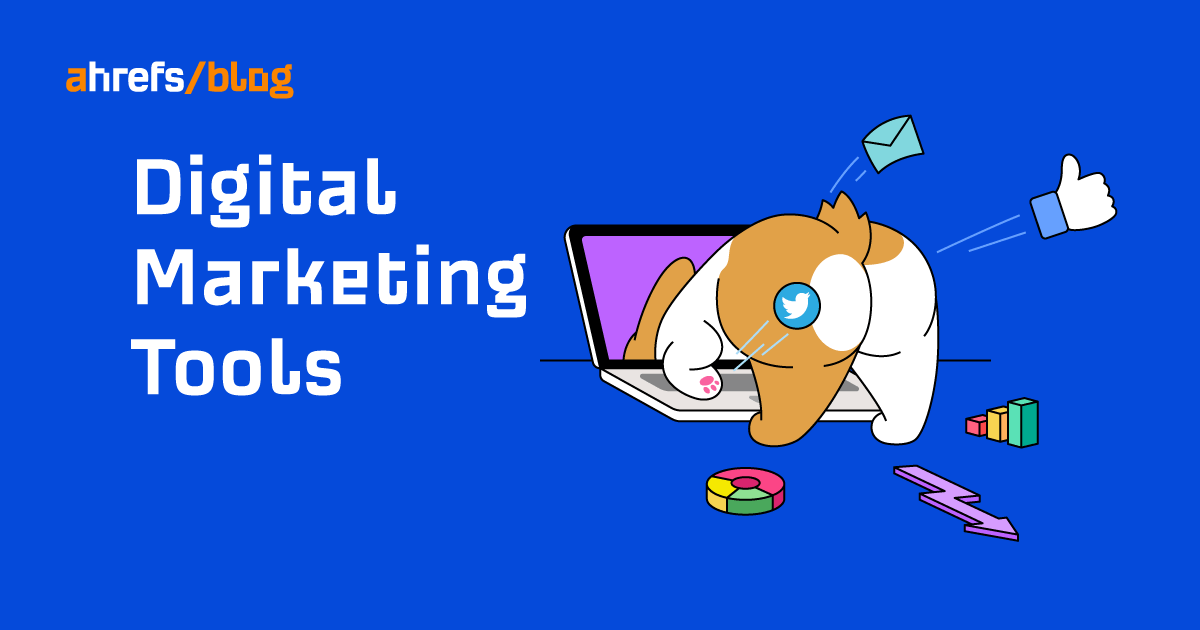How to Increase Traffic to Your Website: 9 Proven Strategies for Success
If you have landed on this article, the chances are you are a distraught website owner almost at your wits’ end trying to understand how to drive traffic to your website that can deliver the results you want. The...


If you have landed on this article, the chances are you are a distraught website owner almost at your wits’ end trying to understand how to drive traffic to your website that can deliver the results you want.
The most common problem a new website owner encounters in the initial days after the website’s launch is finding those first few visitors who can reassure them that the website can help them scale their business.
However, getting the first few visitors to your website is sometimes the most difficult phase to overcome.
By the time you read this blog, you may have read a handful of other articles that explain the different ways to increase website traffic.
This blog also aims to enlighten you with the same knowledge, but the difference is that you will benefit from the know-how we have accumulated over the last 14+ years in the industry.
We have helped thousands of websites rank on top of Google and generate millions of visitors. That’s exactly why Google has ranked this article at the top of its search results instead of other websites.
So, without further ado, let’s crank up the engine and find proven ways how to increase traffic to your website.
The Importance of Website Traffic
Getting found on the web is critical for the success of any business, but it is even more important for small businesses without an offline presence.
The only way for such businesses to survive is to ensure that the target audience visits their website and interacts with it so that they can convert them into leads and, later, customers.
This pattern can be seen if you check the success mantra of all online-centric businesses that have succeeded during and after the COVID-19 days, which saw an influx of online-only businesses.
At Stan Ventures, we believe that understanding and optimizing website traffic is foundational to building a robust online presence and achieving your business goals.
Definition and Importance of Website Traffic
Website traffic refers to the number of visitors who land on your website. It doesn’t matter how they come, which we will discuss soon, but if they are genuine users (not bots), consider their website traffic.
This metric is crucial because it directly impacts your brand’s visibility, engagement, and conversions.
As I mentioned in the introduction, high website traffic can increase customer acquisition opportunities, brand advocacy, and revenue generation if you have the right marketing funnel for the website.
Attracting more visitors can enhance your brand’s reach and influence in the market.
At Stan Ventures, we emphasize a holistic approach to website traffic, focusing not just on quantity but also on the quality of visitors.
Attracting visitors is not enough; they should also be relevant to your business and interested in your offer.
Our philosophy, not just for us but also our clients, is to drive targeted traffic that converts into loyal customers.
Different Types of Website Traffic That Matters
To effectively manage and increase website traffic, it’s important to understand the different types of traffic sources:
Organic Traffic:
Visitors who find your website through search engines like Google and Bing. These visitors may have used generic or branded keywords (a keyword with your brand name) on Google or any other search.
Achieved through search engine optimization (SEO) strategies, which help your site rank higher in search engine results pages (SERPs).
Direct Traffic:
Visitors who type your website’s URL directly into their browser, which you as a brand would love because that means people know you by your brand name. It often consists of repeat visitors or those already familiar with your brand.
Referral Web Traffic:
Visitors who come to your website through links on other websites. This type of traffic is driven by backlinks, which bring visitors and enhance your site’s authority and SEO performance.
You may have done a campaign with a publisher who mentioned the link to your website on his.
Social Traffic:
Visitors who arrive at your website through social media platforms like Facebook, Twitter, LinkedIn, and Instagram. Your social media marketing efforts, including posts, ads, and influencer collaborations, can influence this traffic.
Each traffic type has unique characteristics and requires different strategies to optimize. At Stan Ventures, we tailor our approach to suit each traffic source, ensuring that your website attracts a diverse and engaged audience.
Key Metrics to Track and Analyze Website Traffic
Now that you know the sources from which traffic can flow to your website, let’s look at some metrics that will help you determine the audience and their engagement level after they land on your website.
These metrics can be found on Google Analytics, which will be taken for reference throughout this blog, as it’s the most widely used platform for tracking traffic.
Number of Visitors:
The total count of individuals visiting your site. Helps gauge the overall popularity and reach of your website.
Page Views:
The number of pages viewed by visitors. Indicates the level of engagement and the effectiveness of your website’s navigation.
Bounce Rate (now Time Spent and Engagement Rate in New GA4):
The percentage of visitors who leave your site within the first few seconds after landing on the first page. A high bounce rate or low engagement rate may indicate issues with site content, user experience, or relevance.
Average Session Duration:
The average amount of time visitors spend on your site. Longer session durations suggest that visitors find your content valuable and engaging.
Conversion Rate:
The percentage of visitors who complete a desired action, such as purchasing or filling out a contact form. This metric is crucial for assessing the effectiveness of your website in achieving business goals.
Traffic Sources:
The origin of your website traffic, whether organic, direct, referral, or social. It helps identify the most effective channels in driving visitors to your site.
At Stan Ventures, we utilize advanced analytics tools to track these metrics and provide insights that inform our strategies.
By understanding the nuances of your website traffic, we can create customized plans to enhance user experience, boost engagement, and drive conversions.
SEO Optimization for Increasing Traffic to Your Website
SEO continues to be the most effective way to increase website traffic. It means optimizing your website to organically appear on Google search results when your target audience searches for a query relevant to your industry.
Keywords
The prerequisite for getting your website and its pages to rank on Google organically is to ensure you have the right answers to the questions the target audience searches for on Google. That’s where keyword research comes into the picture.
Think of a scenario wherein you publish a 1500+ word article your audience is not interested in reading. This is where keyword research and topic research comes to your rescue.
Using SEO tools, you can find the topics your audience likes reading about and also develop a cluster of keywords that can be used within the topic to enhance the relevance of the article you write.
If you have a fairly new website, finding a topic with a keyword cluster and good search volume but a low difficulty score is ideal. This way, you can increase the page’s rankings without much effort and improve the site’s traffic.
If you go by high-difficulty keyword clusters, the amount of SEO effort you have to put in terms of on-page optimization, off-page, and technical will be much higher. The reason for this is that there are a lot of competitors with high authority that are already competing for the top position.
This doesn’t mean you should never choose a keyword with a high difficulty score. In most cases, a keyword with high search volume tends to have a difficulty score ranging from 70-90.
When your website gains authority, you can target these keywords to get high organic traffic, but it’s better to avoid them if your website is new.
Once you have identified the keywords, you must optimize the content using it. Now let’s dive into that aspect:
On-Page SEO
The keywords you have identified must be used naturally and effectively within the content of your pages for Google and other search engines to understand that they are highly relevant to what users are searching for.
This can be achieved by using keywords in URL, headings, meta titles, alt text, and within the body of the content. Ensuring the content is well-optimized with the keyword cluster you have identified will help enhance website traffic.
On-page optimization of the content using the keywords doesn’t imply that you must force-stamp the keywords in every paragraph.
You can use them naturally within the content so that users can make sense of it. If used out of context, Google can penalize your content, which could result in it not getting indexed.
Off-Page SEO
Now that you have identified the keywords and optimized the content, the next step is to ensure you get off-page recommendations from other websites.
Recommendations come in the form of backlinks, and ever since its inception, Google’s algorithm has been favoring websites with more backlinks to show up on top of its results.
In most cases, new websites rely on guest posting, blogger outreach, niche edits, and building strategies to get the initial backlinks to their websites. This activity can help increase the site’s domain authority, and as the domain authority increases, Google will send more traffic to your website.
Look no further if you are looking for an agency to do link-building activities for your website.
Stan Ventures has been helping thousands of website owners build quality backlinks to their websites using all the strategies that we discussed above.
Just schedule a call with our expert and keep your off-page SEO woes at bay.
Content Marketing
Content marketing is a cornerstone strategy for increasing website traffic. By providing valuable, engaging content, you can attract and retain visitors, ultimately driving more traffic to your website.
Blogging
Creating engaging and valuable blog content is essential for attracting and retaining visitors. Here’s how to make your blog work for you:
How to Create Engaging, Valuable Blog Content
Focus on your audience’s needs and interests to create content that resonates with them. Answer their questions, solve their problems, and provide insights that are hard to find elsewhere.
The best example of a vibrant blog section would be that of Stan Ventures. We regularly update the blog section with articles that matter to the target audience, either website or agency owners.
This helps us build trust and, over time, convert the traffic we generate into leads and customers through a proper nurturing funnel.
Use a conversational tone (this article is a good example), incorporate multimedia elements like images and videos, and ensure your content is easy to read with clear headings and bullet points.
Importance of a Content Calendar and Regular Updates
A content calendar helps you plan and organize your blog posts. It ensures you consistently publish fresh content, which keeps your audience engaged and coming back for more.
Regular updates signal to search engines that your site is active, which can improve your rankings.
Guest Posting
Guest posting is another effective content marketing strategy. It involves writing articles for other websites in your niche, which can drive traffic back to your site.
Benefits of Guest Posting and Finding Guest Post Opportunities
Guest posting can increase your website’s visibility, build your brand’s authority, and attract new audiences.
To find guest post opportunities, look for reputable websites in your industry that accept guest contributions.
Reach out to them with a well-crafted pitch that outlines your expertise and proposed topics.
Strategies for Writing and Submitting Successful Guest Posts
When writing guest posts, provide high-quality, valuable content that aligns with the host site’s audience.
Include a compelling author bio with a link back to your website. Follow the submission guidelines carefully and build relationships with site editors for future opportunities.
Social Media Strategies
Social media continues to be one of the most effective ways to generate traffic to your website.
That said, if you are not targeting the right audience through social media, you will end up with an inactive audience, no matter how exciting your posts are.
I frequently encounter website owners who say they found an agency that can do a traffic generation campaign for less than $100 for 10K clicks.
This strategy may benefit you if you want to show social media traffic. However, it may not be the right approach if you want users who can engage with your published content.
Instead, you should focus on a targeted paid campaign or organic means that include publishing content your target users like to consume.
That said, a few businesses should zero in on a primary social media platform, as their products and services are more inclined to attract the users who use that particular platform.
For example, the White Label SEO offered by Stan Ventures is more of a B2B service, and the right target audience for this service is more active on LinkedIn rather than Facebook.
That’s why we promote and publish more White Label-related content on LinkedIn than on Facebook.
Creating engaging content is crucial for driving traffic from social media to your website. Here are the types of content that perform well on social media and tips for increasing engagement and shares.
Types of Content That Perform Well on Social Media and Drive Traffic
To drive traffic from social media to your website, focus on creating the following types of content:
Infographics: Visually appealing and easy to digest, infographics can quickly convey information and are highly shareable.Videos: Short, engaging videos can capture attention and drive viewers to your site for more information.Listicles: Lists are easy to read and attract clicks, especially when they promise valuable insights or tips.Interactive Content: Polls, quizzes, and interactive posts can boost engagement and encourage shares.Personal Stories: Sharing relatable stories can humanize your brand and foster a deeper connection with your audience.Tips for Increasing Engagement and Shares on Social Platforms
Increasing engagement on social media can significantly boost your website traffic. Here are some tips to help you achieve this:
Know Your Audience: Understand the interests and preferences of your audience to create content that resonates with them.Use Eye-Catching Visuals: High-quality images and videos can capture attention and encourage users to engage with your posts.Post Consistently: Regular posting keeps your audience engaged and increases the chances of sharing your content.Engage with Your Audience: Respond to comments, ask questions, and encourage discussions to build a community around your brand.Use Hashtags: Relevant hashtags can increase the visibility of your posts and attract a broader audience.Promote User-Generated Content: Encourage your audience to create content related to your brand and share it on your social platforms.Paid Ads
Paid advertising is a powerful way to drive traffic to your website. Here is an overview of paid advertising options: PPC and social media ads.
Google Ads
Setting up and optimizing Google Ads campaigns can help you achieve maximum ROI. Here’s how to make the most of your Google Ads:
Setting Up and Optimizing Google Ads Campaigns for Maximum ROI
To set up a successful Google Ads campaign, start by
Step 1: Select your campaign goals, such as driving website traffic or increasing leads or conversions.
Step 2: Create compelling ad copy and choose relevant keywords that match your target audience’s search queries.
Step 3: Regularly monitor and adjust your bids to ensure you get the best return on investment.
The Importance of Targeting and Keyword Selection in Paid Search
Effective targeting and keyword selection are crucial for the success of your Google Ads campaigns. Use keyword research tools like Google Keyword Planner to identify high-performing keywords with a good search volume and competition balance. Target specific demographics, locations, and interests to reach the most relevant audience.
Social Media Ads
Social media ads on platforms like Facebook, Instagram, and LinkedIn can drive significant traffic to your site. Here’s how to create effective ad campaigns:
Using Facebook, Instagram, and LinkedIn Ads to Drive Traffic to Your Site
Each social media platform offers unique advertising options.
Facebook and Instagram ads are great for targeting users based on their interests and behaviors, while LinkedIn ads, as I said before, are ideal for reaching a professional audience.
Create visually appealing ads with clear calls to action to encourage users to visit your website.
Creating Effective Ad Campaigns That Resonate with Your Target Audience
To create effective social media ad campaigns, define your target audience. Use audience insights to tailor your ad content to their preferences and needs.
Test different ad formats, such as carousel ads, video ads, and sponsored posts, to see which performs best.
Regularly analyze your ad performance and make adjustments to improve engagement and drive more traffic to your site.
Email Marketing
Email Marketing is possibly the most underutilized traffic generation strategy. Most businesses think it is a thing of the past.
But in reality, email marketing helps maintain brand awareness and also helps you to drive repeat traffic and conversions.
The data we have from Stan Ventures suggests that 85% of conversions that happen monthly have emails as one of the touch points before the completion of the payment.
This signifies the effectiveness of email marketing.
Creating a nurturing funnel based on the subscribers’ interests will greatly improve the conversion rate.
Additionally, try to offer value and promotion within your email nurture sequence, as too much promotion can lead to high unsubscribe rates.
At Stan Ventures, we have identified a healthy mix of both value-based emails and promotional emails.
We also follow a schedule for sending emails so that subscribers expect them, which improves the open rate.
Local Search Optimization
While we discussed SEO in general initially, ensuring your business has a local search presence is also important.
Even a business without a website can easily set this up using Google Business Profile or Bing Places for Business.
A local plumber or a carpenter who manages to get listed on a Google Business profile has the luxury of ranking on Google search results even without a website.
If they have a website, Google Business Profile can send traffic to your website.
If not, you can get messages and calls; sometimes, prospects will reach your location without you having to send them the location information.
This means that if you are a local business owner, make sure to get enlisted in Google Business Profile and Bing Places for Business.
Influencer Marketing
Influencer marketing is a highly effective strategy for increasing website traffic and building brand awareness. Here’s how to leverage this powerful tool:
Benefits of Collaborating with Influencers in Your Industry
Collaborating with influencers can significantly expand your reach and influence. Influencers have established trust with their followers, making their endorsements more credible and impactful. By partnering with the right influencers, you can tap into their audience and gain exposure to potential customers who trust their recommendations.
Finding and Partnering with Relevant Influencers to Expand Your Reach
Identify individuals with a strong presence in your industry or niche to find the right influencers.
Use tools like BuzzSumo or Upfluence to find influencers based on their bios, content, and audience engagement.
Once you’ve identified potential influencers, send a personalized message explaining why you believe they would be a good fit for your brand and how you can mutually benefit from the partnership.
Strategies for Running Successful Influencer Marketing Campaigns
Running a successful influencer marketing campaign involves careful planning and execution. Here are some key strategies:
Set Clear Goals: Define what you want to achieve with your influencer marketing campaign, whether it’s increased brand awareness, more website traffic, or higher sales.Choose the Right Influencers: Select influencers whose audience aligns with your target market and who are genuinely interested in your product or service.Create Authentic Content: Allow influencers the creative freedom to produce content that resonates with their audience. Authenticity is key to successful influencer marketing.Track Performance: Use analytics tools to monitor the performance of your influencer campaigns. Measure engagement rates, website traffic, and conversions to evaluate the campaign’s effectiveness.Influencer marketing can help your online business thrive in a digital landscape where traditional ads are often overlooked.
By leveraging the trust and reach of influencers, you can drive significant traffic to your website and achieve your marketing goals.
If you have landed on this article, the chances are you are a distraught website owner almost at your wits’ end trying to understand how to make your website deliver the results you want.
The most common problem a new website owner encounters in the initial days after the website’s launch is finding those first few visitors who can reassure them that the website can help them scale their business.
However, getting the first few visitors to your website is sometimes the most difficult phase to overcome.
By the time you read this blog, you may have read a handful of other articles that try to explain the different ways to increase traffic to your website.
This blog also aims to enlighten you with the same knowledge, but the difference is that you will benefit from the know-how we have accumulated over the last 14+ years in the industry.
We have helped thousands of websites rank on top of Google and generate millions of visitors.
That’s exactly why Google has ranked this article higher than other websites in its search results.
So, without further ado, let’s crank up the engine and find proven ways to increase traffic to your website.
Increasing website traffic is critical for the success of any business, especially small businesses without an offline presence.
It is essential to ensure that your target audience visits your website, interacts with it, and converts it into leads and, later, customers.
You can build a robust online presence and achieve your business goals by understanding and optimizing website traffic.
At Stan Ventures, we emphasize a holistic approach to website traffic, focusing not just on quantity but also on the quality of visitors.
Attracting visitors is not enough; they should also be relevant to your business and interested in your offer. Our philosophy is to drive targeted traffic that converts into loyal customers.
We discussed strategies to increase website traffic, including SEO, content marketing, social media strategies, paid ads, email marketing, local search optimization, and influencer marketing.
Each strategy has unique benefits and can significantly drive more traffic to your website.
By leveraging the power of these strategies and continuously monitoring and optimizing your efforts, you can overcome the initial challenges and achieve sustainable growth for your website.
Remember, the key to success lies in understanding your audience, creating valuable content, and continuously adapting to the changing digital landscape.
Implement these proven strategies, and you’ll be well on your way to increasing traffic to your website and achieving your business objectives. Good luck!
FAQ’s
Q: How can SEO help drive traffic to my site?
SEO helps improve your website’s visibility on search engine results pages (SERPs). By optimizing your content with relevant keywords, improving site speed, and building quality backlinks, you can attract more organic traffic from search engines like Google.
Q: What are some on-page SEO techniques to increase traffic?
On-page SEO techniques include optimizing meta tags (title, description), using header tags (H1, H2, etc.), incorporating keywords naturally into your content, improving site speed, and ensuring your site is mobile-friendly.
Q: How does off-page SEO contribute to traffic growth?
Off-page SEO involves building backlinks from reputable sites, engaging in social media marketing, and guest posting. These efforts increase your site’s authority and improve its search engine rankings, driving more traffic.
Q: How does content marketing drive traffic to my website?
Content marketing involves creating valuable, relevant content that attracts and engages your target audience. Regularly publishing high-quality blog posts, articles, videos, and infographics can draw more visitors to your site.
Q: What types of content perform best for increasing traffic?
Blog posts, videos, infographics, listicles, and interactive content like quizzes and polls are highly effective. Content that answers common questions and solves problems for your audience tends to perform best.

 Fransebas
Fransebas 
































